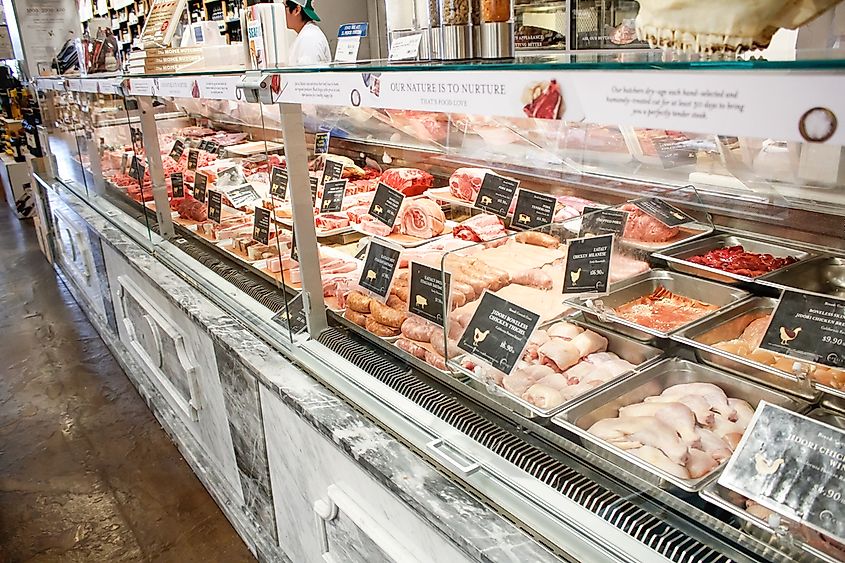Does The US Import Meat From China?

- The United States import its beef is mostly from Australia, followed by New Zealand, Canada, and Mexico.
- In the last decade, China was responsible for about 90% of vitamin C that was consumed in the United States.
- China’s import is 14% lower than in the period before the COVID-19 coronavirus pandemic.
The US trades with many countries, and China is one of its biggest trading partners. The country is huge and influential in many fields, and it makes sense that two of the largest countries in the world would trade with each other. But what does the US import from China?
The United States is pretty self-sufficient in food, so the question about importing meat from other countries might seem irrelevant. However, being self-sufficient does not mean you do not import food. The US does import multiple types of food from China. Including meat. The majority of the meat consumed in the US is not from China; however, some of it is. It is a relatively small number, especially when compared to some other countries, but the fact remains that it does get imported.
Meat Importing
Take beef, for example. Beef is mostly imported from Australia, followed by New Zealand, Canada, and Mexico. When looking at the amounts of beef imported in the US, China sits way behind these countries in the 17th place. Other types of meat, such as lamb and pork, also get imported from China, but the amount is not enormous either. However, many are suspicious of the quality of meat that gets imported. If you are wondering about chicken, yes, the US imports it as well, in smaller amounts.

Besides meat products, the US imports many other food products from China. This includes a large number of agricultural products, including apple juice and multiple sources of vitamin C. Believe it or not, throughout the past decade, China was responsible for about 90% of vitamin C that was consumed in the United States.
It was also responsible for 70% of the apple juice, as crazy as it may sound. Other food products that the US imports from China in larger quantities are tilapia, cod, mushrooms, and garlic. On the other hand, the US imports a lot of things to China as well, including soybeans, cotton, and wheat.
The Issue Of Food Safety And COVID-19
However, currently, with the appearance of the COVID-19 coronavirus, trading with China has decreased significantly. Although food production is relatively safe and follows multiple safety protocols, it makes sense that people are cautious about the food that comes from other countries, especially in the COVID-19 coronavirus context. This has impacted trading with China negatively.
According to multiple reports, China’s import picture does not look good. It is 14% lower than in the period before the COVID-19 coronavirus. We should mention that China’s economy has been returning to normal for the last few months since the country managed to put the virus under control. Still, despite all of that, it will probably be a while before trading with China continues as it did before the pandemic.
The novel coronavirus is not the only reason to be concerned about the quality of food that comes from China. The country was hit by multiple food safety scandals throughout the past decade. For example, meat suppliers were accused of selling expired meat, which forced McDonald’s to change its food safety practices in China.
Of course, there are always concerns about processed chicken that comes from China, due to plenty of diseases that appeared in the country due to it. While trading with China is important for the economy, the US, as a country, should look into increasing safety measures and checks when importing food from there.











